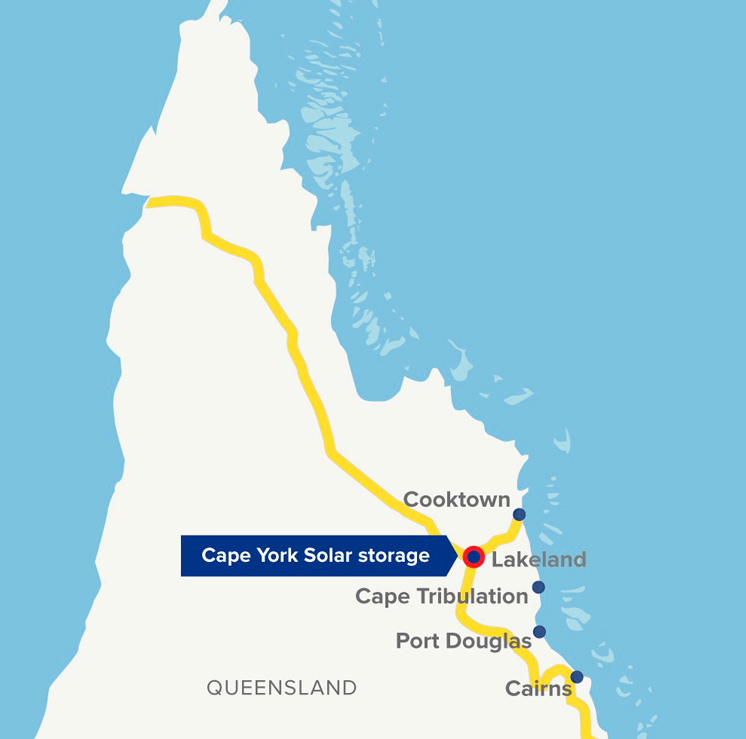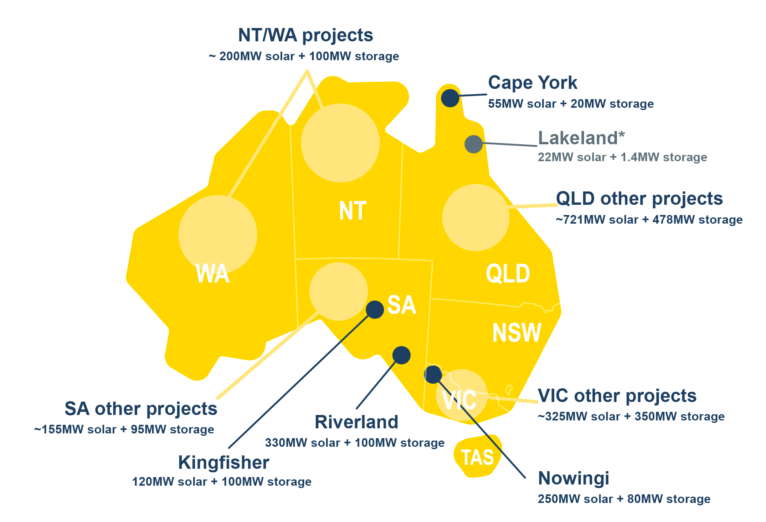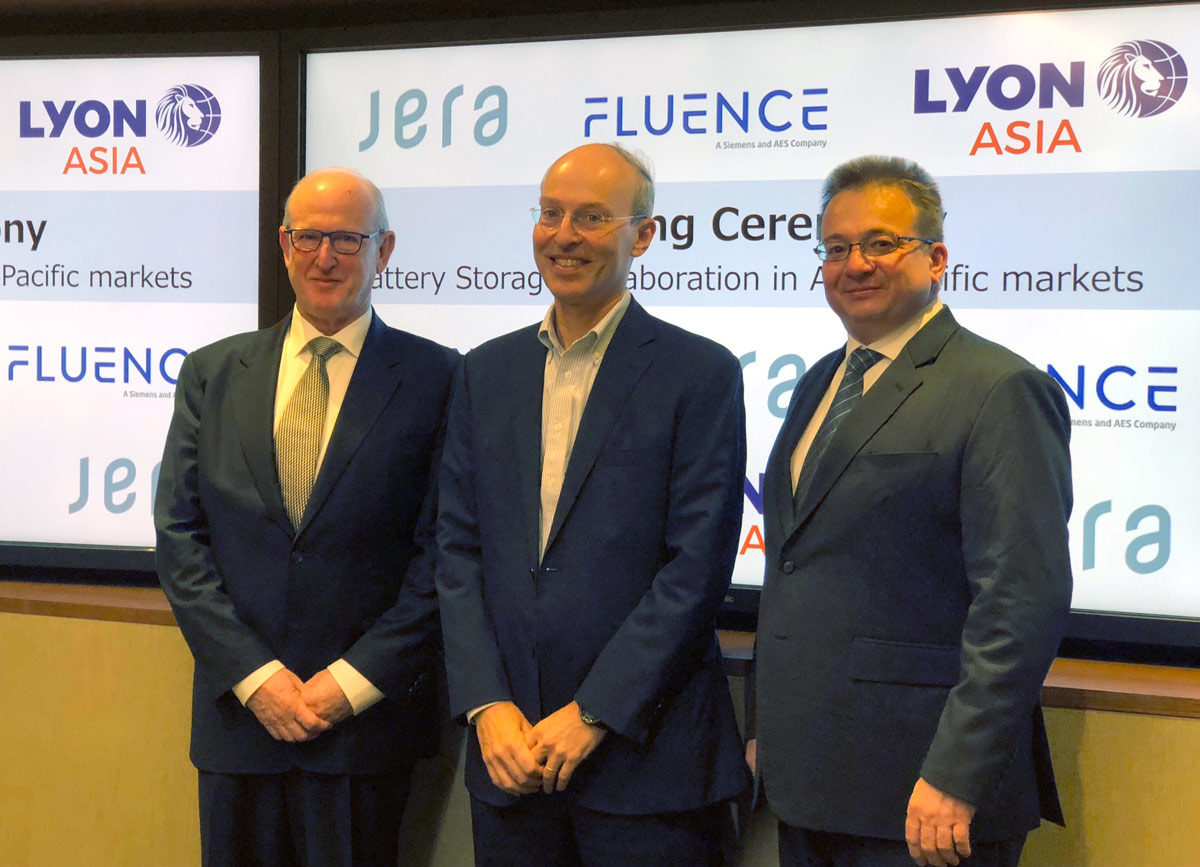With the Australian Electricity Market Operator (AEMO) imposing more strenuous grid connection requirements for large scale solar projects, developers are using DC-coupled battery storage to clear the hurdle. The Cape York Battery Power Plant will coupled 55 MW of large scale solar, with a 20 MW/80 MWh battery array, in what the developers are describing as the ‘world’s first solar peaker’.
Having received financial backing from Japanese energy provider JERA and regulator approval, the Far North Queensland-located project is set to begin construction in the coming months.
Lyon Group is the project developer, having earlier completed the adjacent 13 MW solar and 1.3 MW/5.3 MWh Lakeland Solar and Storage project. Coal and gas trader JERA, a JV between the TEPCO Fuel & Power Company and Chubu Electric Power Company, will stump up the funds to developer the Cape York Power Plant – with U.S.-based Fluence providing the DC-coupled battery array.
The partnership between Lyon Group, JERA and Fluence was first formed in May. Alongside the Cape York project, the three companies are pursuing the development of the Riverland Battery Solar Power Plant in South Australia, and the Nowingi Plant in Victoria in a first tranche of projects. The partnership will operate in the Asia-Pacific region.
 “The Cape York Battery Power Plant will be the first fully integrated grid-connected large dispatchable solar peaker in Australia if not the world,” said Lyon Group Chair David Green in a statement. “Cape York Battery Power Plant is a $150 million commitment to new peaking generation and a stronger grid in north Queensland.”
“The Cape York Battery Power Plant will be the first fully integrated grid-connected large dispatchable solar peaker in Australia if not the world,” said Lyon Group Chair David Green in a statement. “Cape York Battery Power Plant is a $150 million commitment to new peaking generation and a stronger grid in north Queensland.”
Lyon says that alongside assisting with achieving grid connection, the integration of four-hour storage capacity at the 50 MW Cape York solar project the battery will allow the project to provide frequency and voltage services to the grid, along with price arbitrage trading and selling power during high price events.
“As new renewable peaking assets follow Cape York into the Australian market and their flexibility is fully understood, they will quickly become a leading alternative to traditional forms of peaking generation,” said Fluence COO John Zahurancik.
While JERA primarily operates coal and gas fired generation assets, a whopping 74 GW of capacity, it says that the Cape York project will be a demonstration of “globally significant dispatchable solar power plant.”
“JERA is delighted with progres s on development of the Cape York, Riverland and Nowingi Battery Power Plants, and is looking forward to the Cape York project commencing construction early in the new year,” said JERA’s Satoshi Yajima, Senior Vice President of Power Generation Business. “JERA places overriding priority on continuing to meet its obligation to deliver st able energy while increasing its reliance on solar and wind.”

Image: Lyon Group
This content is protected by copyright and may not be reused. If you want to cooperate with us and would like to reuse some of our content, please contact: editors@pv-magazine.com.









By submitting this form you agree to pv magazine using your data for the purposes of publishing your comment.
Your personal data will only be disclosed or otherwise transmitted to third parties for the purposes of spam filtering or if this is necessary for technical maintenance of the website. Any other transfer to third parties will not take place unless this is justified on the basis of applicable data protection regulations or if pv magazine is legally obliged to do so.
You may revoke this consent at any time with effect for the future, in which case your personal data will be deleted immediately. Otherwise, your data will be deleted if pv magazine has processed your request or the purpose of data storage is fulfilled.
Further information on data privacy can be found in our Data Protection Policy.